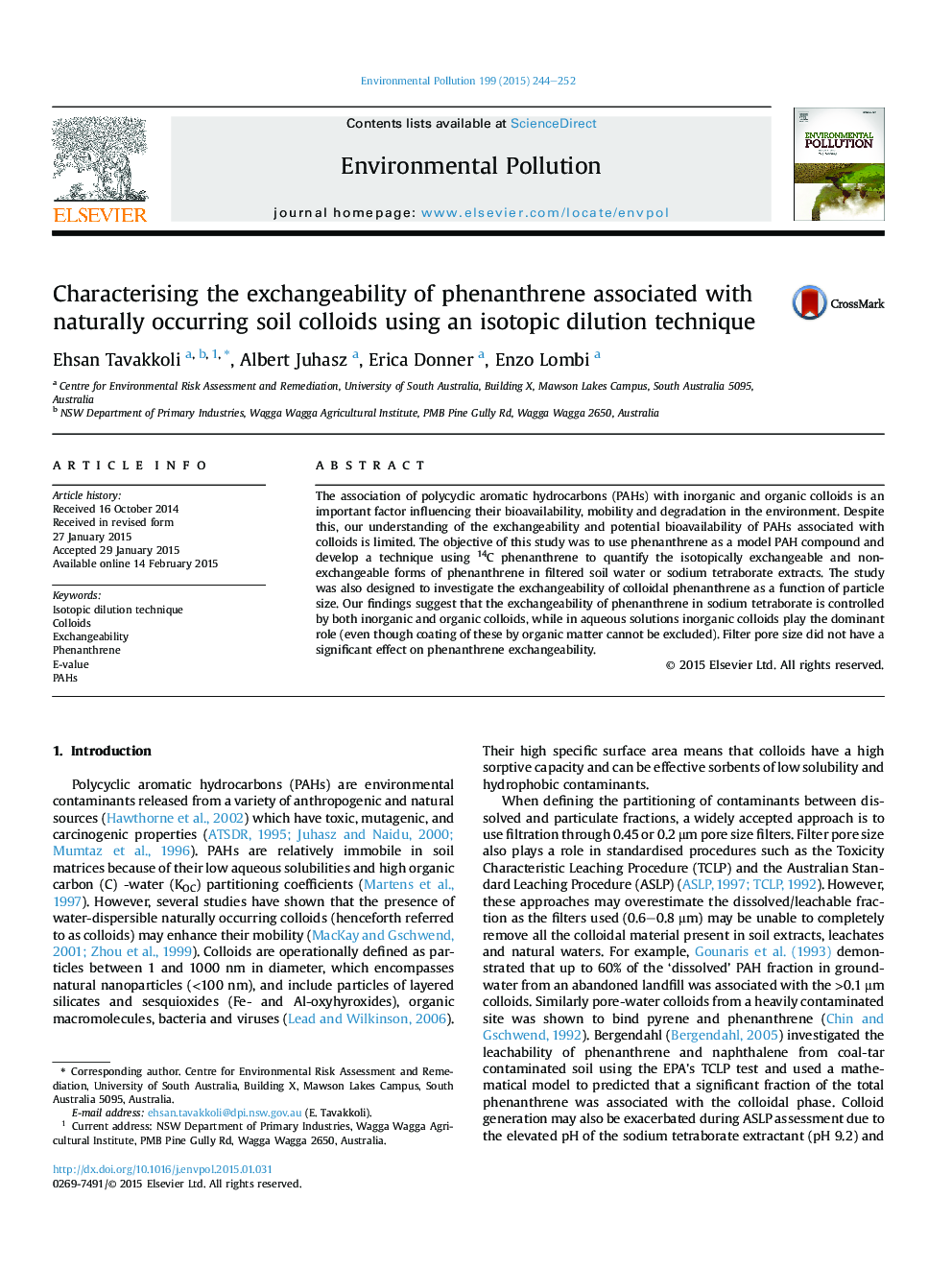| Article ID | Journal | Published Year | Pages | File Type |
|---|---|---|---|---|
| 6316974 | Environmental Pollution | 2015 | 9 Pages |
â¢An isotopic dilution method was developed to characterise phenanthrene/colloid interactions.â¢This method quantified the isotopically exchangeable (E-value) phenanthrene.â¢The refined E-value measurement determined the non-exchangeable pools that were associated with colloids.â¢This technique can be used in the risk assessment of PAH-contaminated systems.
The association of polycyclic aromatic hydrocarbons (PAHs) with inorganic and organic colloids is an important factor influencing their bioavailability, mobility and degradation in the environment. Despite this, our understanding of the exchangeability and potential bioavailability of PAHs associated with colloids is limited. The objective of this study was to use phenanthrene as a model PAH compound and develop a technique using 14C phenanthrene to quantify the isotopically exchangeable and non-exchangeable forms of phenanthrene in filtered soil water or sodium tetraborate extracts. The study was also designed to investigate the exchangeability of colloidal phenanthrene as a function of particle size. Our findings suggest that the exchangeability of phenanthrene in sodium tetraborate is controlled by both inorganic and organic colloids, while in aqueous solutions inorganic colloids play the dominant role (even though coating of these by organic matter cannot be excluded). Filter pore size did not have a significant effect on phenanthrene exchangeability.
